
If you are wondering when to divide hostas and other perennials, you have come to the right place. In this story, I will cover when to divide hostas, daylilies and other perennial plants. I will also discuss the best way to divide and transplant perennials such as daylilies, peonies, hostas, ornamental grasses and other perennial plants.
Here are some tips that will come in handy when deciding how and when to divide perennials in your garden. It’s not difficult to divide hostas and daylilies and lots of other types of perennials. It’s easy to transplant them once they have been dug up and divided. But there are a few things you need to know to make sure your perennial plants continue to grow and thrive.
Three Signs It’s Time to Divide Hostas, Daylilies, Etc.
Are your hostas or daylilies getting crowded in your flowerbeds? Are some of your coneflowers and perennial salvias not blossoming like they used to?
Then, it’s time to divide and plant your perennials.
The rule of thumb for dividing perennials is every three to four years. According to Horticulture Magazine, there are three signs it’s time to divide your perennials:
First Sign: Your perennials, such as lungwort or bluebeard, aren’t blooming at all.
Second Sign: Your perennials blossom with a donut appearance. The middle part of the plant is dead, while the outer part is healthy.
Third Sign: Your perennials are getting crowded in their current space.
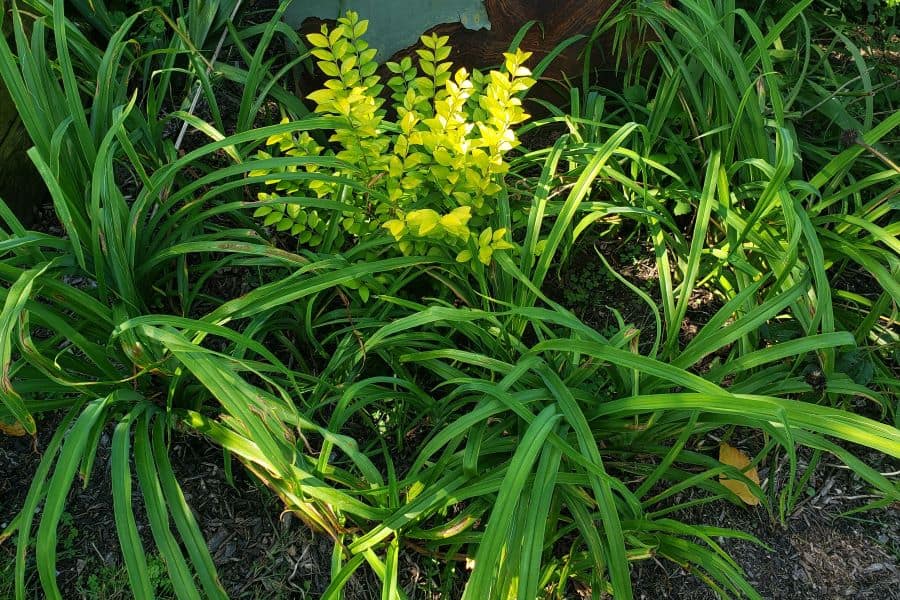
You’ll notice the above signs during the blooming season or at the end of the growing season.
Autumn makes the most sense for transplanting. That’s because the ground is still warm and there are about 4-6 weeks before the soil freezes. Plus, a plant naturally puts its energy into the root system in the fall (rather than growing aboveground).
Keep in mind that you don’t need to divide all perennials. For example, bleeding hearts don’t bush out and don’t diminish in appearance after four years. They faithfully bloom for a decade or more if they’re planted in the right spot with well-draining soil.
When Should I Transplant Perennials?
Your plant hardiness zone determines how late into the season you can divide and plant perennials. For example, you can transplant perennials in USDA Zones 6a and 6b until mid-November.
However, plant experts advise that you divide and plant perennials a good six weeks before the ground freezes. This will allow the roots to take hold and grow deep in the soil.
If you live in colder zones, such as Zone 5 and below, you should divide and transplant perennials by mid-October. Otherwise, wait until early spring to divide hostas, daylilies and other perennials. However, autumn is a great time to take pictures of your flowerbeds. Then, you will remember which perennials you want to divide next spring and decide where you want to put them.
If you are unsure about your hardiness zone, consult the USDA Plant Hardiness Zone Map.
How to Divide Hostas and Other Perennials
Depending on how many perennials you need to transplant, all you need is some time, a strong back, and the following gardening tools. If you need any of these tools, check out these Garden Tools on Amazon.
- A shovel
- Garden fork
- A Garden trowel
- Garden knife
- Compost
- A drip line irrigation system or soaker hoses. (Unless you choose to water by hand.)
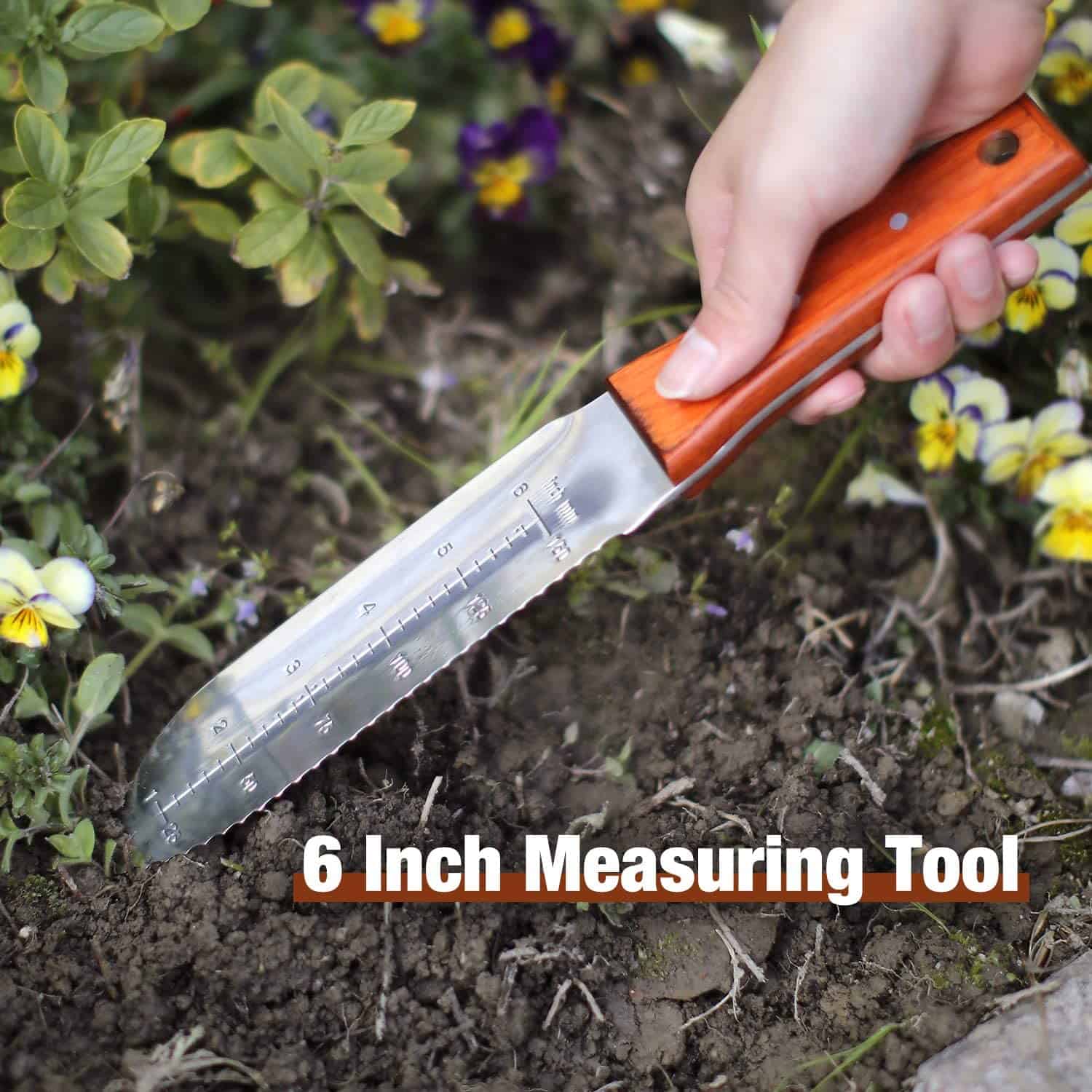
Follow These Three Steps
Here are the steps to digging and dividing perennials:
- Before you divide any perennials, prepare the new area to transplant them by digging a deep hole for the roots and adding some compost in the soil.
- Next, dig at the soil line of the perennial you’re dividing and go down deep enough to dislodge the entire root system.
- Pull the plant and its roots out of the ground. You can use your garden fork or trowel to help you uproot the plant.
Determine What Kind of Roots Your Perennials Have
The plant’s roots will guide you on how you divide and plant. There are five major types of perennial roots:
- Plants with offset roots have baby plants grow that at the root line. Just snap off these babies, keeping any of their roots with you. Hostas form offsets, also called eyes. Succulents, such as hens and chicks, cacti and bromeliads also have offset roots.
- Surface roots run just underneath the dripline. Perennials, such as brown-eyed Susans and creeping sedums, are two examples of surface roots. Cut between the plants with the divided root system to transplant. Some herbs have shallow roots, including basil, oregano, tarragon, thyme and woodruff. Many groundcovers also have surface roots, such as pachysandra.
- Taproots have one long, deep root that has root hairs growing out of it. Taproots propagate by adding smaller taproots to become individual plants. Cut off these new taproots to plant elsewhere. Baptisia has taproots. Other plants with taproots include amsonia, butterfly weed and daylilies.
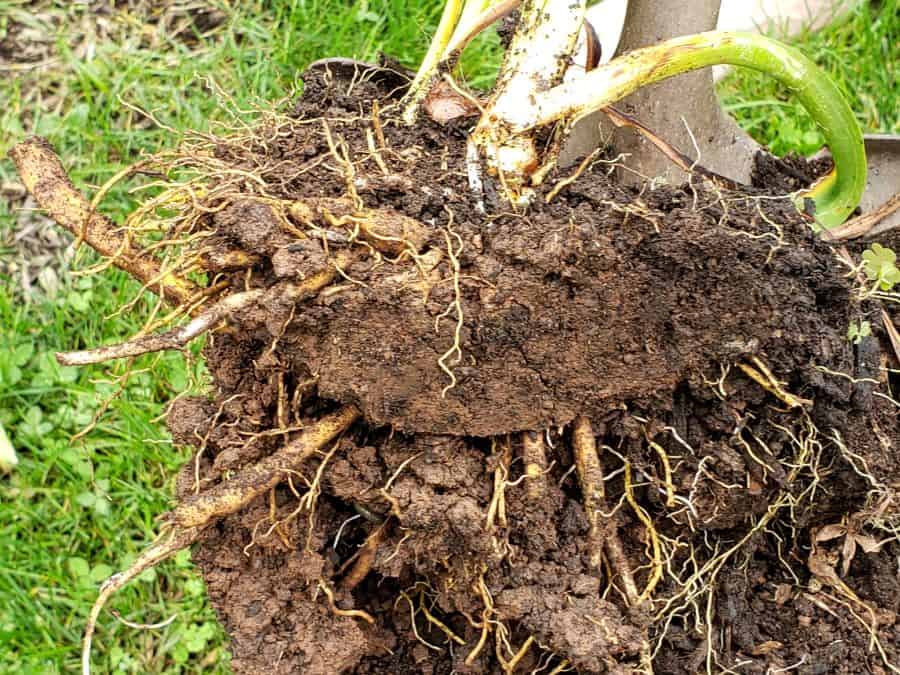
- Perennials with underground runners for roots spread mysteriously. Ostrich ferns have these underground runners, and you’ll notice them unexpectedly popping up in your other beds. You can dig out these underground runners and the new plant to place it in the right spot in your landscape. Mint, tansy, lily-of-the-valley, bamboo and Chinese lanterns also have runners. Many experts recommend planting mint and its cousins (peppermint, spearmint and Dutch mint) in containers because their runners will become invasive if planted in the ground.
- Lavender, Russian sage, and shrubs have woody roots. Suppose you’re dividing your woody plants, cut between the mother plant and the new root. You’ll need a soil knife to separate them.
Don’t Forget to Water!
Water your newly transplanted perennials often. Soaker hoses or drip irrigation will deliver the much-needed water to the plants’ roots.
Plan to water these new plants every day for a week or so. Then, water them every other week for two weeks. Afterward, you can cut back the watering to two to three times a week.
In the fall, it does tend to rain more often. If you’re getting adequate rainfall, cut back the watering accordingly.
How and When to Divide Hostas and Daylilies
It’s easy to dig up daylilies. They have a taproot, and daylilies propagate in the same flowerbed as the host plant. Dig a hole that’s wide and deep enough to pull out the entire plant. Use a trowel or shovel to bring the plant out of the ground.
Next, use your soil knife to cut the root fibers that keep these plants together. Once the plants are split, you transplant them in another sunny spot on your property to brighten that area.
Hostas are another easy plant to divide. Hostas have taproots, and the roots grow in clumps like daylilies do. These root fibers (called root threads) grow out of the taproot.
Dig up the hostas that need to be divided. Use a hand pruner or a soil knife to divide the hosta into two plants by cutting the root threads between the tubers. Make sure that you only cut one-third of the thread roots off the original plant.
Next, plant your hostas in containers or a new spot in your landscape. Make sure to water every day until the roots are established.
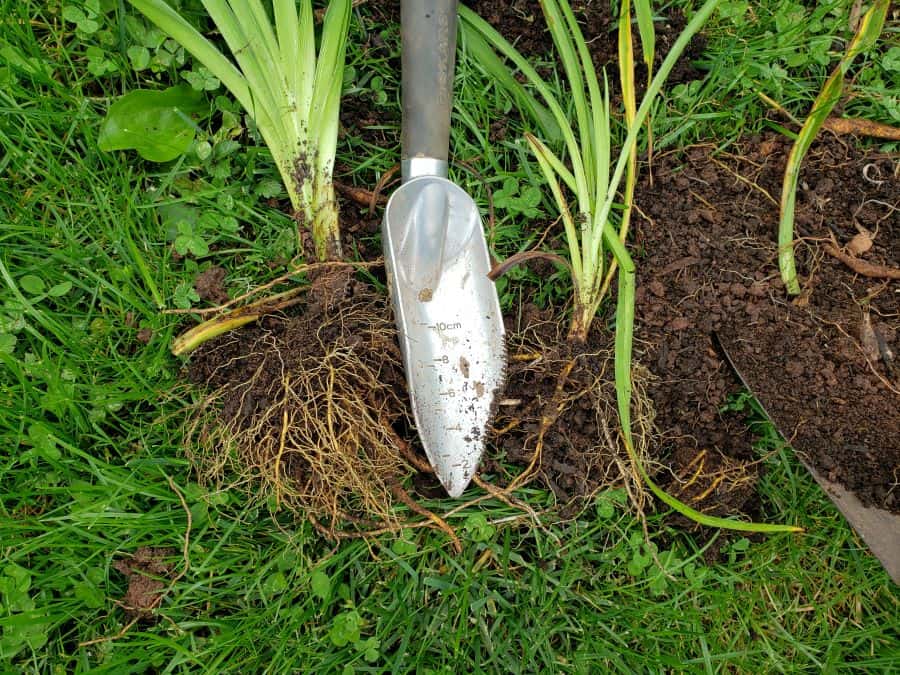
Dividing Ornamental Grasses
There are two types of ornamental grasses: warm season grasses and cool season grasses.
Warm season grasses should be divided in the spring through mid-summer, while you can divide cool season grasses in the early fall or spring.
Wear gloves when dividing your ornamental grasses because some have sharp root edges.
How to divide ornamental grasses:
- Dig a big enough hole to pull up the grass plants that you’re separating.
- Break the roots apart with your hands or with your soil knife.
- Ornamental grasses’ root threads look similar to hosta and daylilies root fibers. Divide the root clump to keep one-third of the threads with each division.
- Cut away any dead areas on the plant.
- Get the divided plant into the ground as soon as you can.
- Water your transplanted ornamental grass every day, except when it rains. This will get the roots settled into the soil.
When You Don’t Have Room for Any More Plants
If you find that your garden is already complete, think about giving away these cuttings. Many new gardeners would love to get plants from an experienced gardener. You can also give them tips for successful planting.
While your local area may not have a plant swap meet in the fall, you can tell your Facebook and Instagram friends that you have free plants to giveaway. You may be surprised by the response!
If you’re left with divided perennial plants and no takers, you can always compost these extra plants in your composter.
Don’t Forget to Plant Spring Bulbs and New Perennials before the Ground Freezes
While you’re dividing and transplanting hostas and other perennials, don’t forget to plant spring bulbs, including
- Allium
- Bluebells
- Crocus
- Daffodils
- Grape hyacinths
- Hyacinths
- Iris
- Lilies
- Snowdrops
- Tulips
These bulbs will brighten your landscape while winter is defrosting into spring. Plant some of these sun-loving bulbs near deciduous trees that won’t leaf out until after the bulbs stop blooming.
Use the same tools that you used for transplanting. (See above.) Plus. add some compost to the spaces where you’ll be planting the bulbs.
Fall is also a great time to take advantage of discount prices on perennial plants. Visit your independent garden center to snag deals on this past spring’s perennials. Sometimes you can save up to 75% off the original ticketed price!
Get all your perennials and spring bulbs in the ground this fall. You will be delighted when next year’s garden is fuller and more colorful.
How to Divide Hostas: Tips from My Garden
I have waited until early November to plant spring bulbs. I live in Zone 6b, so I cut it pretty close to the first freeze mark when I last added bulbs.
Stick to the above guidelines until you become more familiar with your area. And remember that fall temperatures fluctuate each year, so nothing is written in stone.
I’m waiting until early next spring to divide my perennials, even though I prefer to divide and plant perennials in the fall. My son will be digging a new flowerbed in the front yard, So, some of my overgrown daylilies and coneflowers will have a new home.
This year, I’ve transplanted shrubs that needed more sun. My son is getting his landscape design degree in December. He said, “Start watering that transplanted weigela more often because it’s looking rough.”
Watering is a must for successful transplanting. Your spring bulbs won’t need the water because they won’t start waking up until late winter. But your divided perennials will need H2O until the roots get settled.
Do you have tons of fallen leaves in your yard and garden?
Check out the Best Cordless Electric Leaf Blowers that make fall cleanup easy!
Home, Garden and Homestead is a proud Amazon Affiliate. We earn a small commission (at no cost to you) from qualified sales generated by links in our stories. Thank you for supporting this website!



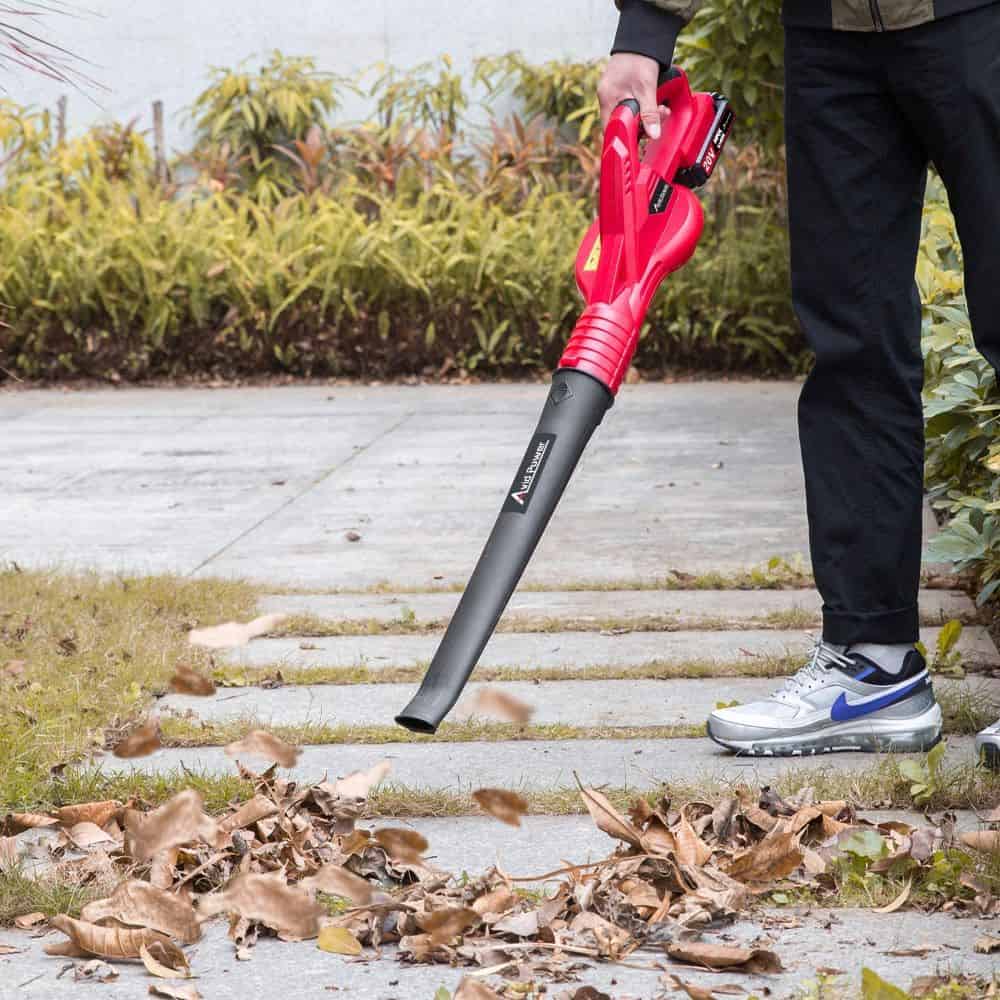

Leave a Reply